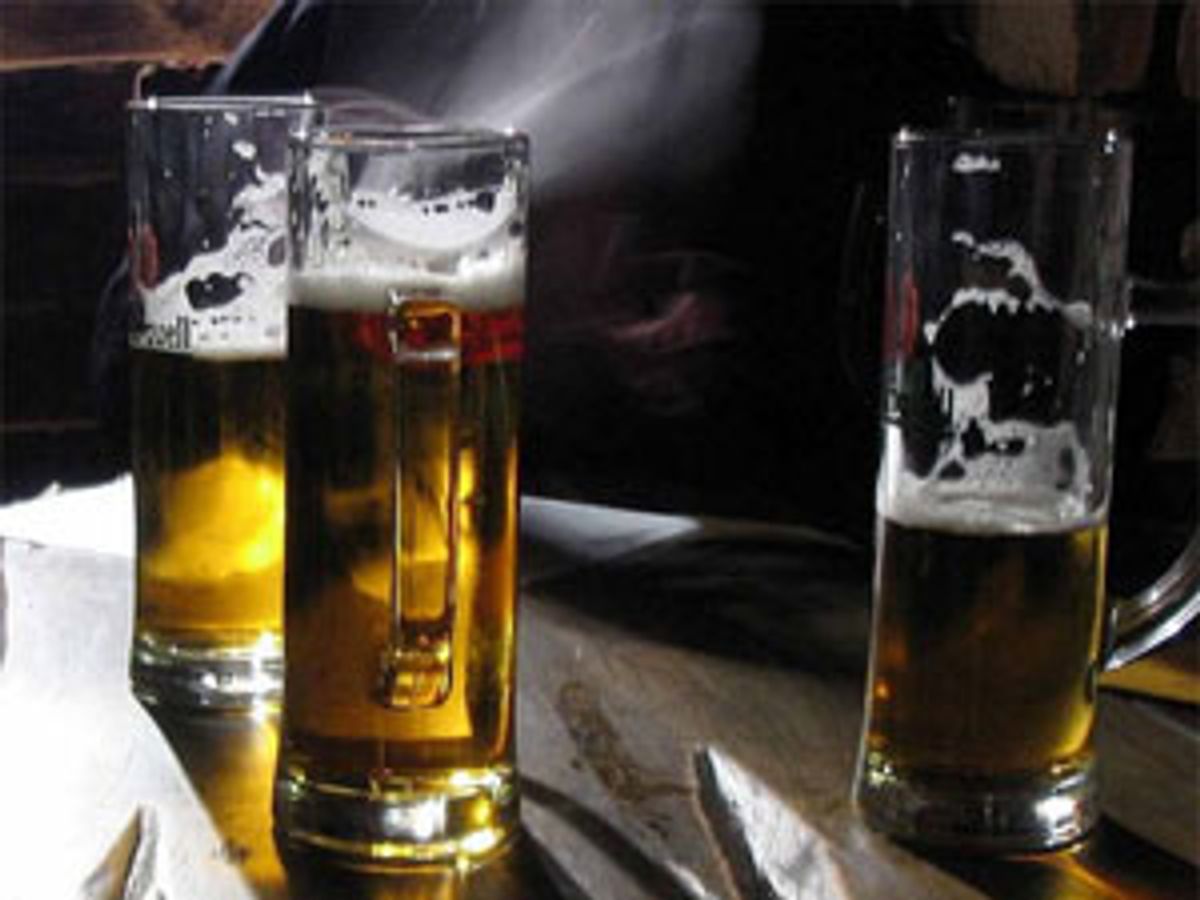If my own hangover this morning is any indication, the news of this research is likely to capture the interest of the general public and generate a bit more interest in the field of nanotechnology.
Yunfeng Lu, a professor of chemical and biomolecular engineering at UCLA, and his colleagues described their nanoscale pill in the journal Nature Nanotechnology (“Biomimetic enzyme nanocomplexes and their use as antidotes and preventive measures for alcohol intoxication”). Look at that title again—not only are they claiming the pill could serve as antidote for a hangover, but it might also be used to prevent them in the first place.
Lu and his colleagues attempted to mimic the body's reaction to hangovers by combining two enzymes that carry out different functions. Together they eliminate the toxins of the alcohol.
The first, alcohol oxidase, supports the body’s oxidation of alcohol. The unfortunate side effect of this oxidation, however, is the production of hydrogen peroxide, which is itself toxic. So the pill contains another enzyme that transforms the hydrogen peroxide into water and oxygen.
“The pill acts in a way extremely similar to the way your liver does," Lu says in the university press release. "With further research, this discovery could be used as a preventative measure or antidote for alcohol intoxication."
The nanoscale-polymer capsule measures just 10 nanometers in diameter and only one nanometer thick. Despite the thinness of its outer layer, the enzymes are protected until they reach the alcohol molecule where they are then released. This mechanism closely mimics an organelle, which is an element inside of cells that catalyzes chemical reactions.
In tests to show the nanocapsule’s effectiveness as an antidote to alcohol poisoning, the researchers found that mice that received the enzyme combination had blood-alcohol levels that were 15.8 percent lower than the control group after 45 minutes, 26.1 percent lower after 90 minutes and 34.7 percent lower after three hours.
The nanocapsule’s effectiveness as a preventative measure for alcohol poisoning was equal to its use as an antidote: Mice that received the nanocapsule had blood-alcohol levels that were 10.1 percent lower than in control-group mice after 45 minutes, 31.8 percent lower after 90 minutes and 36.8 percent lower after three hours.
In some ways more significant—at least for those of you who have no immediate need for the pill—is the understanding that there are a huge number of enzymes available to us. Now that it has been demonstrated that you can combine two different enzymes to combat a malady, this could open the door to a host of new treatments for illnesses.
While a technology like this will likely have to go through a lengthy development process involving regulatory bodies before it can come to market, the potential for something like this to capture the imagination of the general public is immense.
There’s a common lament among those in the field of nanotechnology that bemoans that the general public still has little idea of what nanotechnology is. To be sure, nanotechnology is often merely a catalyst, enabling other technologies, but this lack of public awareness may also be the result of nanotechnology not having a “killer app.” A cure—and vaccine—for a hangover would earn its own vending machine in your favorite tavern. Maybe it could say "Brought to you by nanotechology!" on its front panel.
Photo: UCLA
Dexter Johnson is a contributing editor at IEEE Spectrum, with a focus on nanotechnology.




